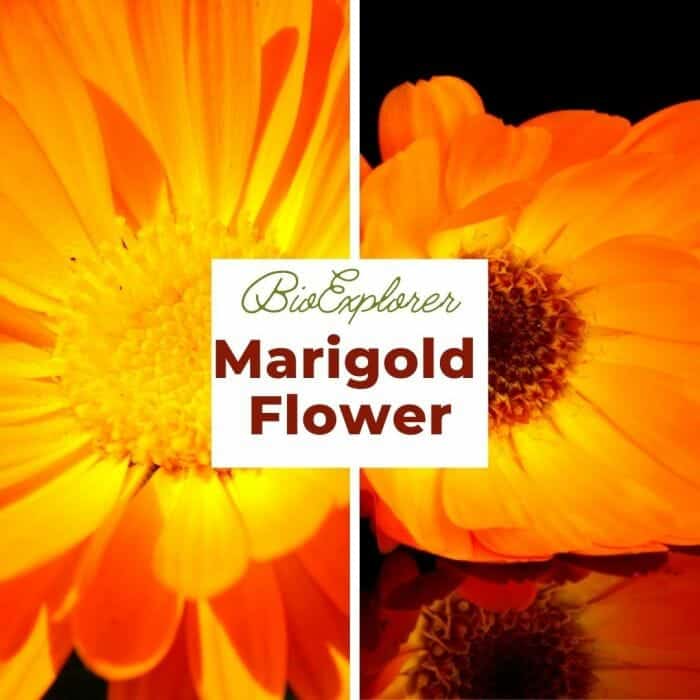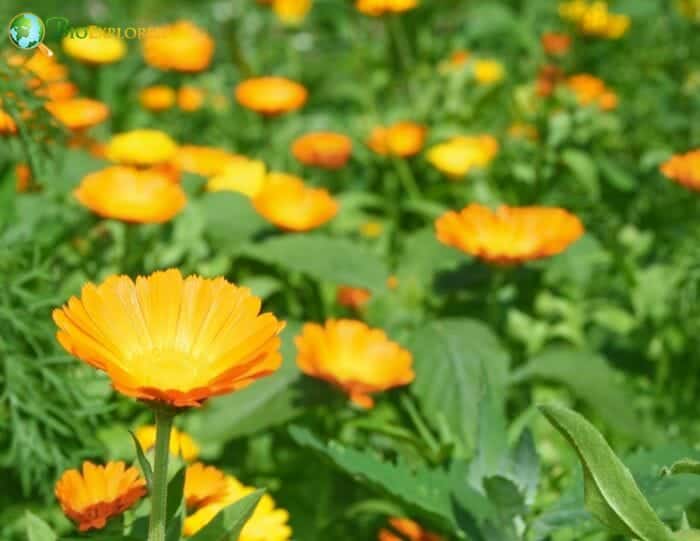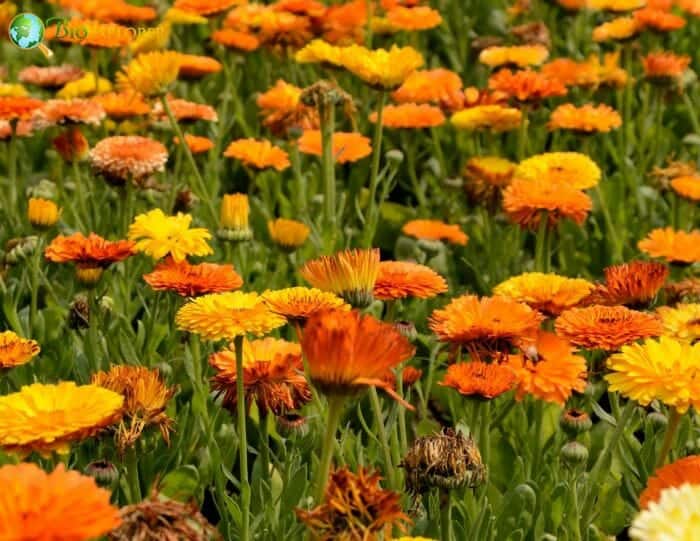
Marigold (Calendula officinalis) is used as an herbal remedy for skin conditions or to treat wounds. But as an ornamental plant today, it is cultivated in numerous gardens. There, this plant, with its yellow to orange flowers, is an attraction for beneficial insects.

Marigold (Tagetes erecta), known in Mexico as Cempasúchil, holds immense cultural significance. Its vibrant orange and yellow blooms are central to Día de los Muertos (Day of the Dead) celebrations, where the flowers are used to decorate altars and graves.
The Aztecs revered marigolds for their medicinal properties and spiritual power, believing the flowers could guide spirits back to the living world. Marigolds thrive in Mexico’s warm, sunny climate, easily growing large, bushy plants crowned with cheerful blossoms. Today, they symbolize the fragility and continuity of life across Mexico’s traditions.
Marigold is a member of the Asteraceae family. There are approximately 56 species of marigolds[1] in the world.

Marigold is an annual herb that can grow up to 32 inches (80 cm) tall. However, it’s typically much smaller at 15 and 20 inches (40 to 50 cm). The elongated, lanceolate, dark green leaves of the marigold are striking.

They rest on the hairy, almost square, felted stems that alternately bear the leaves. Especially characteristic is the yellow to Orange Daisy flowers, which can reach a height of up to 2 inches (5 cm) in diameter. Marigold’s flowers usually bloom from June and October.












